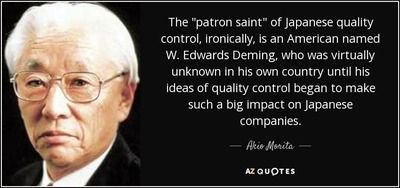
Introduction:
In the contemporary business sphere, Japanese management principles are progressively gaining ground as a method to bolster efficiency and effectiveness. The customary approach of Japanese leadership which has its emphasis on team motivation, organizational excellence and performance enhancement is thus ideally suited for organisations seeking to maximise their potentialities. By assimilating these ideals with advanced commercial approaches, enterprises can fashion an atmosphere where everyone involved can prosper and realise their objectives. This blog post will examine how such tenets may be applied in workplace settings so as to create an ambience conducive for success.
This article is about Japanese Management Principles for Workplace Excellence and in this article, you will learn how Japanese Leadership & Performance Improvement techniques help organisations achieve excellence & boost team motivation. This article will be of great help if you are interested in any one of these topics:
- Harnessing Japanese Leadership for Achieving Workplace Efficiency
- Performance Improvement through Japanese Management Principles
- Cultivating Organizational Excellence with Japanese Strategies
- Unlocking Team Motivation with Japanese Leadership Practices
- Enhancing Workplace Excellence with Traditional Japanese Management
1. Exploring Japanese Leadership for Workplace Excellence
Japanese culture is renowned for its exclusive and effective approach to business administration. Nowadays, as businesses make every effort to grow productivity, effectiveness and customer gratification, Japanese leadership concepts have become increasingly widespread. Investigating Japanese leadership principles can proffer precious discernments into the most effective means of leading a squad in today's competitive corporate landscape.
A critical aspect that differentiates Japanese directorship from other forms of business management is its accent on constructing relationships between leaders and their employees.
By nurturing solid relationships with their personnel, leaders can create an ambience that encourages communication and collaboration whilst simultaneously providing feedback to ensure employees are engaged in pursuit of a shared objective. In addition, having amiable connections with members of staff contributes towards fostering loyalty amongst them ultimately leading to augmented productivity and higher spirits over time. An approach adopted by Japanese executives when dealing with workforces is through the organisation of laid-back gatherings or “huddles” where matters may be raised openly without fear of disparagement or censure from senior management.
It is evident that Japanese leadership stresses on early identification of problems before they grow too intricate for a single person to manage successfully. Further, these informal conversations serve as an occasion wherein managers can incite creative problem-solving by allocating tasks among team members having greater proficiency in certain areas when compared with the entire organisation. Moreover, another noteworthy element of Japanese leadership lies in its concentration on ongoing advancement through self-examination and gleaning from experiences both within and outside the workplace. Through the habitual evaluation of their teams' progress as well as taking note of sectoral developments, leaders have a clearer perception about what ought to be modified in order for them to realise more accomplishment with future ventures or endeavours embarked upon by their business or association altogether. Furthermore, the effective execution of any new venture necessitates dedication from all parties involved; thus it is essential that each level within an organisation comprehends objectives set out by top management so that they are able discern how best to contribute towards fulfilling these goals separately while still subscribing collectively overall corporate aims designated by executive personnel.
2. The Role of Performance Improvement in Japanese Management
The Japanese have a considerable heritage of successful administration principles for workplace excellence. One of the most essential elements in this success has been performance enhancement, otherwise known as Kaizen. Kaizen is an ongoing endeavour to upgrade processes and products through modest, gradual modifications. It concentrates on abolishing wastefulness and augmenting effectiveness by means of constant examination and refinement. This modus operandi has been employed proficiently in numerous Japanese firms, culminating in improved customer gratification, heightened productivity and lowered expenses. Performance improvement forms one part of the all-round system of Japanese management tenets for workplace distinction
It is postulated that continual upgrades can be accomplished by concentrating on quality control and making insignificant yet noteworthy alterations to processes in the long haul. This methodology permits associations to focus their endeavors on regions where enhancements can be made with negligible exertion or interference, while additionally permitting them to keep up their present dimensions of yield at a sensible expense by staying away from exorbitant errors which could have been kept away from with better arranging and execution starting from the earliest stage.
The primary objective of performance improvement for Japanese companies is not only to boost efficiency, but also to enhance customer satisfaction and employee morale in order to form an atmosphere that motivates innovation and creativity within the corporate culture as well as strengthening bonds with customers both inside Japan and beyond its borders.
An effective system should ensure that all aspects are taken into account when considering what needs improving - from process flows right down to how customers are treated - so as to not disrupt operations or cause unwarranted delays in delivering goods or services, thereby having a detrimental effect on the customer experience overall. Where this is successfully achieved across every department of an enterprise, performance improvement creates an environment where people feel invigorated due to their knowledge and appreciation that their accomplishments will be appreciated; such heightened morale directly results in increased productivity which contributes towards improved profitability for the business as a whole; furthermore it provides job security for employees who can with assurance work hard knowing they shall receive acknowledgement if above-average outcomes come about – thus allowing individuals within organisations flourish under these conditions would then obviously benefit each stakeholder concerned also.
3. Achieving Organisational Excellence through Japanese Principles
Organisational excellence is the aim of any flourishing enterprise, and Japanese management concepts offer a model for achieving this ambition. The Japanese have long been renowned for their industry and efficiency in connection to managing their businesses, which are principles that can be applied to offices across the globe. The chief elements of organisational brilliance comprise communication, cooperation, creativity as well as constant progression.
The primary step towards attaining organisational distinction through Japanese precepts is efficacious communication. It necessitates not only sharing pertinent information but also comprehending each other's ideas clearly and promptly responding accordingly within an equitable atmosphere conducive enough for free flow participation from all sides involved This necessitates having channels of communication open among all ranks within the organisation so that everybody knows precisely what is expected from them at any given moment. Furthermore, it inspires team members to exchange thoughts with one another in order to make timely improvements or resolve issues. Additionally, communication should encompass feedback both from personnel and clients enabling organisations to stay abreast of trends or customer worries quickly. The next step is joint effort between teams inside the organisation as well as with external stakeholders such as providers or customers.
Collaborating toward a shared objective assists organisations in attaining results more speedily while establishing an atmosphere where everyone cooperates harmoniously towards success. Moreover, this sort of collaboration also engenders an environment where people feel valued due to their input being taken into consideration and acted upon, thus prompting them to devise solutions that are advantageous for the benefit of the company. In addition, innovation is another indispensable component when it comes to achieving excellence within operations by utilising Japanese management principles as it permits companies maintain superiority over rivals through fabrication of modern products or services which better satisfy customer requirements than those supplied by competitors in said industry.
Innovation can also be utilised to generate a decrease in costs whilst augmenting productivity, as novel procedures frequently come with enhanced performance over the long haul, thus resulting in higher revenues for organisations that accept change rather than refusing it when essential. Conclusively, regular improvement is fundamental if businesses wish to maintain competitiveness across time since markets alter quickly due to advances in technology or requirements from customers which necessitate companies constantly monitoring their proficiencies so they may adapt hastily should it become necessary while remaining ahead of rivals at all times. To achieve this objective, carrying out periodic reviews within departments or amongst teams assists pinpoint areas needing attention which then need immediate action taken by management consequently enhancements can occur rapidly before turning into bigger dilemmas further down the line.
4. Boosting Team Motivation with Japanese Techniques
Japanese management techniques are becoming ever more popular within the business world. The Japanese approach to team leadership is founded upon a number of core principles that focus on collaboration, productivity and respect for employees. Enhancing motivation amongst teams and promoting greater efficiency can be achieved through the implementation of Japanese approaches such as Kaizen and 5S. Kaizen is an ongoing improvement system which encourages employees to recognise potentials for advancing their own work practices
By engaging employees in this process, managers can engender a climate of creativity and cooperation among team members as they work together to effectuate improvements. This assists with creating an atmosphere where everyone feels esteemed and acknowledged for their contributions while also prompting them to keep motivating themselves to do better every day. The 5S system is another favoured method employed by businesses hunting after elevating staff morale and advancing workplace eminence.
Five-S (5S) is a system of five steps designed to help teams stay organised and maintain high standards in their work processes. Through its implementation, it encourages everyone from executives down to line staff members to take responsibility for their own actions; this leads towards greater accountability among employees which ultimately results in higher levels of performance not only individually but also as part of entire teams or departments working together on projects or tasks assigned by management . When the time comes to reward employee efforts or recognise successes achieved using these Japanese techniques, it is essential that individuals are acknowledged as well as whole teams who have worked collaboratively towards common goals set out at the start. This serves both as an added incentive and reinforces positive reinforcement amongst all those involved, thus helping keep morale high ensuring continued success with any future initiatives undertaken employing such methods.
5. Enhancing Workplace Efficiency: The Japanese Way
Many businesses across the globe have adopted Japanese management techniques in recognition of their unparalleled success when it comes to the generation and preservation of a highly efficient workplace environment. Of special note are Japanese companies, which are famed for their capacity to promote productivity by means of some distinct principles; among these being striving ceaselessly towards advancement (kaizen), concentrating on customer requirements, and furthering collaboration between personnel. A critical element of Japanese management is represented by kaizen - an arrangement devised with a view to gradually refining processes and products over time.
In implementing Kaizen, goals are established for employees across the entire business, ranging from production process to client service standards. Moreover, it stimulates creativity among personnel by furnishing them with chances to produce new solutions while confronted with difficulties or trials. With Kaizen in place, an atmosphere is cultivated where everyone works together towards one unified goal; this helps construct a synchronised team that can accomplish more than what individual endeavours could ever realise separately.
An additional element of Japanese management is the concentration on customer requirements and guaranteeing that they are content with the excellence of products or services given by the company. This necessitates businesses to acknowledge both commentary from customers as well as market trends when determining how best they can serve them in future. Firms must also ensure that they are reaching customer expectations concerning product quality along with delivery timescales so as to stay competitive within their industry sector.
Ultimately, Japanese companies place great emphasis on team work and collaboration amongst colleagues of all rungs within business operations. This helps generate an atmosphere in which ideas can be readily exchanged between colleagues and every individual's opinion is looked upon with respect independent of their seniority or experience level inside the organisation itself . Teams that operate together competently are able to pinpoint problems rapidly while concurrently having access to differing perspectives - this aids them form more educated decisions pertaining to future strategies or agendas . By cultivating a space for open communication among team members it affords any stakeholders involved in a particular assignment or duty instantaneously gain understanding while helping create harmony between one another; leading thusly towards elevated levels productivity overall .
To summarise , Japanese Management has effectively advanced labour effectiveness through its concentration on unceasing enhancement , customer gratification , as well as collaborative practises at work. As these key foundations have been adopted by enterprises across the world they have managed to revolutionize how they carry out tasks whilst accomplishing much better outcomes altogether.
In conclusion, the Japanese management principles offer an excellent basis for workplace excellence. These practices concentrate on team motivation, performance amelioration and organisational effectiveness through effective and efficient leadership. With the appropriate tools, knowledge base and dedication to such precepts any organisation is likely to experience a noteworthy upgrade in productivity when all is said and done.





